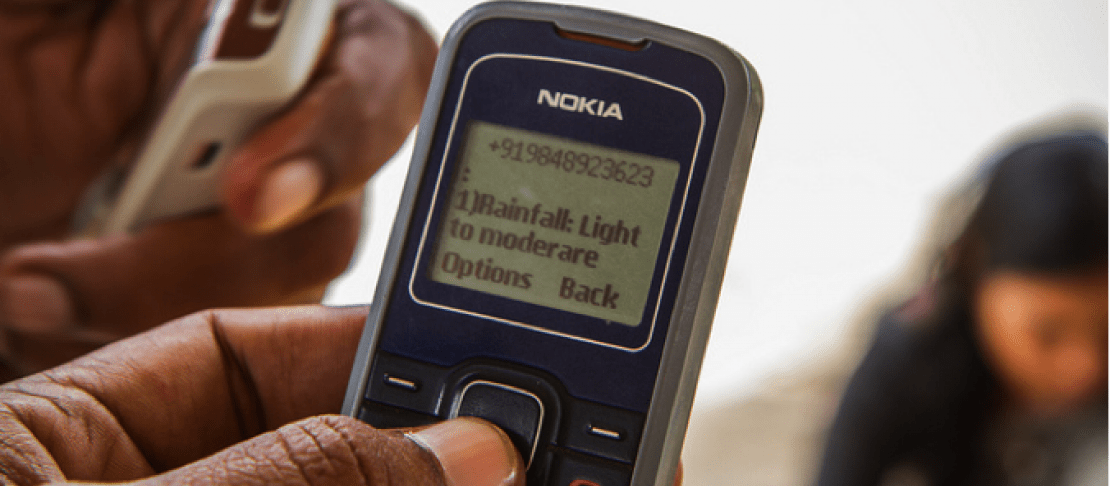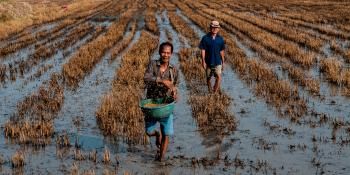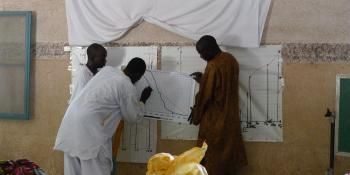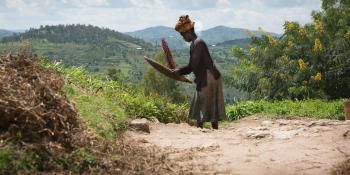Putting climate services into farmers’ hands

A new video shows the importance of supporting farm-level decision making with climate information services in a variable and changing climate.
As an ‘El Niño’ climate event heats up in the Pacific, the spotlight is on how we can prepare for the weather and climate shifts that may be in store. The El Niño-Southern Oscillation (ENSO) is a kind of pendulum in the global climate system, swinging back and forth on a 2-7 year cycle, bringing drought to some areas of the globe and heavy rains to others. The ENSO cycle is a major reason why scientists can make forecasts of rainfall and temperature several months ahead of time, known as the seasonal timescale. The stronger the ENSO ‘signal’ in a given year, the more reliable the forecast will be.
As scientists have gained skill in seasonal climate prediction over the past decades, the "push" to support decision making with climate information services has grown, as has the "pull" of user demand for information services as the climate changes.
The CGIAR Research Program on Climate Change, Agriculture and Food Security (CCAFS) supports farmers in an integrated approach to adaptation to climate variability and change. Combined with other climate smart interventions such as rainwater harvesting, agroforestry, and livelihoods diversification, climate information services can help farmers cope with the negative impacts of climate variability and change, and take advantage of good conditions by confidently investing in their fields.
In a new video, the CCAFS Research Theme on Climate Risk Management and the International Research Institute for Climate and Society (IRI), Columbia University highlight the importance of climate information services in an integrated approach to adaptation and climate risk management, especially relevant when El Niño is upon us:
Gaps and opportunities in climate services
While the potential for climate services is great, they don’t yet reach most of the farmers who need them. Key challenges confront efforts to put climate services into farmers’ hands.
Supporting smallholder farmers with climate services means that national meteorological agencies must be able to provide tailored climate information relevant to the scale of farmers’ decisions. In Africa this means closing several gaps. CCAFS and IRI scientists are supporting African meteorological agencies in improving data, designing farmer-friendly information products and services, and finding effective ways to deliver them. National meteorological agencies in Ethiopia and Tanzania are already using improved data and have made forecasts available online. Efforts underway to expand these techniques to other countries in East Africa will help bring climate services to millions of farmers.
Farmers must be able to access forecasts in a timely manner, whether through their mobile phones or an agricultural extension agent. Research has shown that two-way interaction between farmers and experts is the most effective method for communicating climate services, and CCAFS is testing both face-to-face communications through workshops and ICT-enabled methods. Training communications ‘'intermediaries'’ in organizations and networks that already reach farmers, such as agricultural extension and NGOs, can also widen the reach of forecasts and advisories.
To be useable, forecasts must be perceived as legitimate, or trustworthy, by farmers. Integrating indigenous methods of forecasting with scientific techniques is one way of increasing the accessibility of seasonal forecasting to farmers.
Forecasts must also reach farmers in an equitable manner, without leaving out lower income or female farmers. CCAFS studies have uncovered gender-specific needs for climate services communications channels, which can be met through participatory assessment of needs from the beginning of projects.
Efforts are underway to expand the use of these approaches in East Africa. CCAFS and partners such as the IRI are working to bring climate services to millions of farmers in Tanzania, through a project under the Global Framework for Climate Services.
In West Africa, with CCAFS support, seasonal rainfall forecasts are now reaching around two million farmers across Senegal. This approach has been piloted in the Kaffrine region since 2011, but has since been scaled up through a partnership with community-based radio stations.
Learn more about our work in providing climate services for farmers:
Scaling up climate services in Tanzania
Traditional forecasting meets science for climate risk management
How can we help farmers better understand climate information?
Alexa Jay is a communications specialist with the CCAFS Climate Risk Management theme.
This blog is part of a series surrounding the developing El Niño event and its impacts on agriculture. Read all of our blogs on El Niño impacts.



